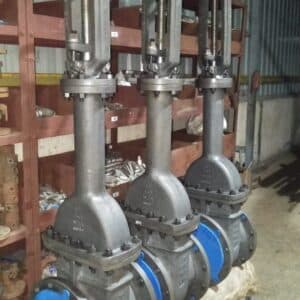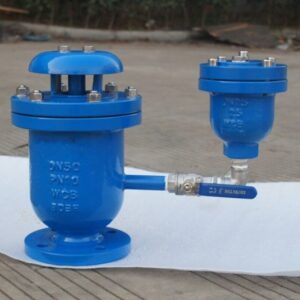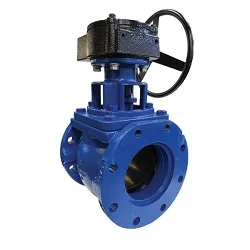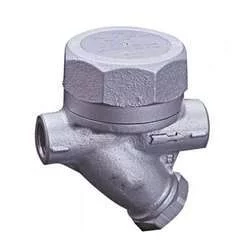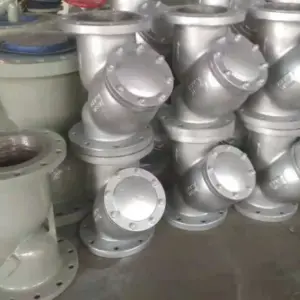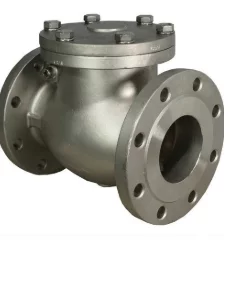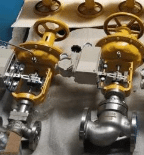Pneumatic vs Electric Control Valve: Which Is Better
Pneumatic vs Electric Control Valves: Which Is Better?
In fluid control and industrial automation, selecting the right control valve is crucial. Two of the most widely used types are electric and pneumatic control valves. While both serve the purpose of controlling temperature, pressure, and fluid flow, their operational mechanisms, efficiency, and use in specific applications are quite distinct.
At Valvesonly, we manufacture and supply a range of industrial control valves that are appropriate for different industry needs. This blog will inform you about the differences between electric and pneumatic control valves, their pros and cons, and how to decide which one is most appropriate for your application.
What Are Pneumatic Control Valves?
Pneumatic control valves are driven by compressed air. The actuators function through converting the air pressure into mechanical movement to open, close, or regulate the flow through the valve. Pneumatic control valves are used extensively where air supply is readily available and speed is required.
What Are Electric Control Valves?
Electric control valves, however, use an electric motor as power. These motors drive the actuator to shift the valve position. Electric control valves are ideal for applications where accuracy, remote control, and energy conservation are key needs.
Major Differences Between Pneumatic and Electric Control Valves
We will classify the major differences between pneumatic and electric control valves on functionality, cost, efficiency, etc.
1. Source of Power
- Pneumatic Valves: Operate on compressed air or gas. They are often connected to a shared air system and represent an acceptable choice for a plant already set up with pneumatic equipment.
- Electric Valves: Operate on electric motors, typically from AC or DC power. They are ideal where the electrical infrastructure is more accessible than compressed air.
2. Speed of Response
- Pneumatic: Quickest response times. Open and shut extremely quickly and suit applications which demand instantaneous reaction best.
- Electric: A somewhat less quick response than pneumatic valves, although they have the advantage of giving better position outputs.
Conclusion: Electric valves win as close-in tolerances; pneumatic valves are faster.
3. Precision and Control
- Electric Valves: Deliver excellent accuracy in controlling the valve position with enhanced electronics, encoders, and feedback systems.
- Pneumatic Valves: Appropriate for on/off or basic throttling but less precise in modulation unless additional positioners are added.
Conclusion: Electric valves are appropriate for uses where sensitive control is needed.
4. Installation and Maintenance
- Pneumatic Valves:
- Require a compressed air system.
- Easier with fewer electrical components.
- Typically, longer lasting and less maintenance required.
- Electric Valves:
- Must be properly electrically connected and motor protected.
- May be sensitive to moisture or dust if exposed.
- May call for more regular inspection of motor and electrical components.
Conclusion: Pneumatic valves require less maintenance to be done; electric valves shall need more repair.
5. Operating Environment
- Pneumatic Valves: Prefer to work in hazardous, explosive, or wet environments in which electrical machinery can be unsafe.
- Electric Valves: Require explosion-proof kinds to work where hazardous environments necessitate, elevating cost.
Conclusion: Pneumatic valves are safer and more reliable in dangerous applications.
6. Energy Efficiency
- Electric Valves: Consume energy only when operating (modulating or switching the actuator). Generally, more efficient in the long term.
- Pneumatic Valves: Require constant air pressure, i.e., constant energy drain due to compressor operation.
Conclusion: Electric valves are more efficient.
7. Initial and Operating Cost
- Pneumatic Valves:
- Less initial cost for the valve.
- Operating cost can be high due to constant compressor operation.
- Electric Valves:
- More upfront investment in motors and controls.
- Less operating cost and long-term savings on power consumption.
Conclusion: Pneumatic wins at upfront cost; electric wins on long-term economics.
8. Application Suitability
- Pneumatic Valves are most suited for:
- Explosive atmospheres
- Applications requiring fast actuation
- On/off applications in manufacturing, mining, oil & gas
- Electric Valves are most suited for:
- Accurate control in HVAC, pharmaceutical, and food processing industries
- Remote and automated applications
- Compressed air infrastructure-less zones
Pros and Cons Summary
Pneumatic Control Valves Pros:
- Rapid operation with rapid response times.
- Safer for dangerous or explosive atmospheres.
- Lower initial cost of acquisition.
- Fewer electronic components in uncomplicated construction.
- Robust and easy maintenance even under severe conditions.
Cons:
- Requires continuous supply of compressed air.
- Higher long-term operating expenses as they require air compressors.
- Less precise control if not supplemented by further accessories like positioners.
- Fewer remote monitoring and automated capabilities.
Electric Control Valves Pros:
- Precise control and positioning with high accuracy.
- Power-efficient – power is only drawn while in actuating state.
- Ideal for automation and remote monitoring.
- No air supply needed – simpler to install in non-pneumatic buildings.
- Clean and quiet operation.
Cons:
- Higher initial cost due to motors and control units.
- Longer response time compared to pneumatic valves.
- Weatherproof or explosion-proof housing necessary for hazardous environments.
- More complex maintenance as electronic components are involved.
Which One Is Better?
The answer largely relies on your specific application, industry requirements, and infrastructure.
Use pneumatic control valves when:
- Your plant is already using compressed air.
- You need quick response times.
- The atmosphere is hazardous or explosive.
- Maintenance needs to be minimal.
Use electric control valves when:
- You need fine and delicate control.
- You need energy efficiency.
- Automation or remote control is a part of the application.
- You are working in a clean, indoor, or industrial setup with a stable power source.
Both pneumatic and electric control valves have their distinct strengths and proper applications. It is a matter of identifying your process requirements, environmental conditions, and long-term operating goals. We at Valvesonly offer a wide range of both pneumatic as well as electric control valves, which are engineered to deliver maximum performance, safety, and lifespan in a range of industries.
Having trouble choosing the right valve for your application? Our experienced team is here to help you navigate the best valve solutions to meet your operating needs.
Recent Posts
- What Is a Steam Trap and How Does It Work?
- What Is a Foot Valve and Why Is It Used in Pumping Systems?
- BI-DIRECTIONAL VS. UNI-DIRECTIONAL KNIFE GATE VALVES: WHICH ONE DO YOU NEED?
- WHAT IS A DOUBLE BLOCK AND BLEED BALL VALVE? A COMPLETE GUIDE
- UNDERSTANDING THE DIFFERENT TYPES OF AIR VALVES: SINGLE VS. DOUBLE ORIFICE

